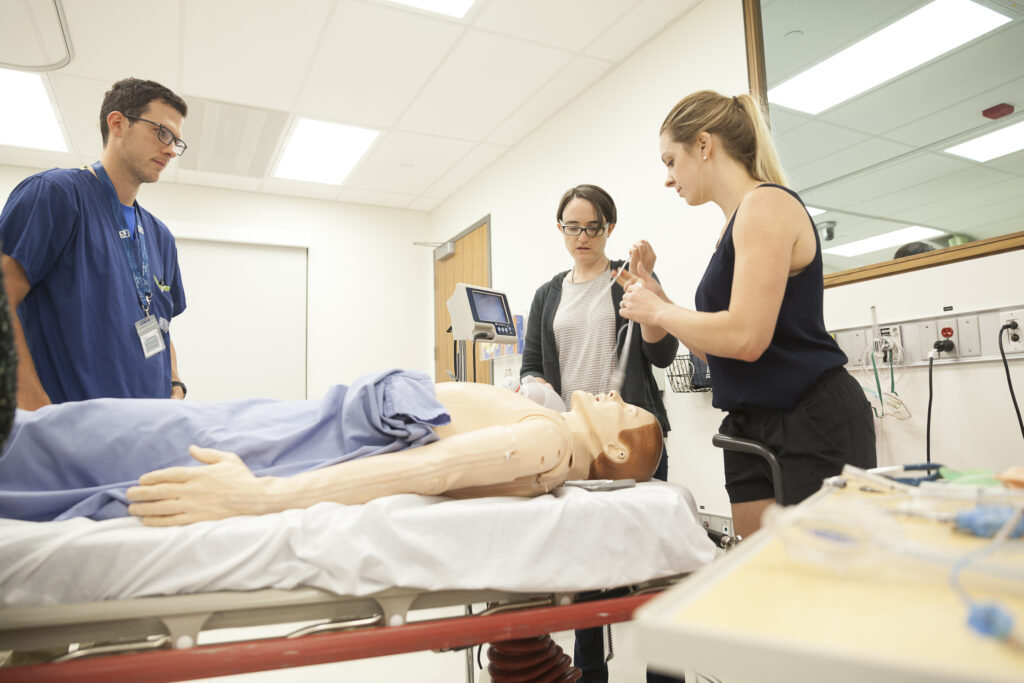Osteopathic medicine takes a holistic approach, focusing on treating the whole person rather than just symptoms. In family medicine, these methods are used to manage conditions such as anxiety, headaches, and asthma. This article outlines key osteopathic techniques for addressing these concerns.
Managing Anxiety Through Osteopathy
Stress and anxiety often affect both the mind and body, leading to physical symptoms like muscle tension, headaches, fatigue, and digestive issues. Osteopathic care offers a holistic approach by addressing the root causes of these symptoms rather than just treating the symptoms themselves. By focusing on the connection between the body’s structure and its overall function, osteopathy helps restore balance and improve the body’s natural ability to heal.
Osteopathic professionals often incorporate breathing exercises to enhance oxygen flow and regulate the body’s stress response. Controlled breathing helps enhance lung function, improves oxygenation, and promotes mental clarity, helping individuals better manage the emotional and physical effects of stress. Together, these methods create a comprehensive approach that supports relaxation, balance, and resilience, empowering individuals to handle daily challenges more effectively.
Relieving Headaches with Osteopathy
Recurring headaches can significantly disrupt daily life. Osteopathic care takes a holistic approach, addressing the root causes of headaches rather than just masking the symptoms. Here are some key techniques:
- Soft Tissue Manipulation: This technique focuses on reducing muscle tension in areas like the neck, shoulders, and upper back, which are often associated with tension headaches. By releasing tight muscles and improving blood flow, it promotes relaxation and helps alleviate pain.
- Cranial Manipulations: Gentle adjustments are used to reduce pressure around cranial structures, targeting issues such as restricted movement in the skull or buildup of tension around the head. This can be particularly effective for migraines or headaches caused by stress.
- Postural Education: Poor posture is a common contributor to tension headaches. By improving spinal alignment and teaching proper posture habits, osteopaths help distribute weight evenly across the body and prevent muscle strain that can lead to recurring headaches.
Through these methods, osteopathic care not only addresses current symptoms but also works to reduce the likelihood of future headaches, supporting long-term well-being.
Supporting Asthma Patients
Asthma symptoms can be addressed with techniques aimed at improving respiratory function by resolving underlying physical issues. Thoracic mobilization helps loosen the muscles and joints around the rib cage to allow for improved lung expansion. Lymphatic drainage techniques reduce inflammation and swelling in the airways.
Diaphragm relaxation techniques help alleviate tension in the diaphragm, supporting smoother breathing. These methods collectively improve respiratory efficiency and physical comfort for individuals managing asthma. Regular practice can also reduce stress and promote overall well-being.
Integrating Osteopathy and Family Medicine
Osteopathic care, combined with family medicine, offers a holistic approach to health by addressing both overall well-being. Licensed osteopaths can work alongside family medicine practitioners to assess specific needs and provide tailored recommendations, such as exercises or lifestyle adjustments, encouraging comprehensive care for individuals and families alike. This collaboration helps patients receive personalized treatments that supports long-term health and prevention.
Take the First Step with Osteopathic Care
Osteopathic techniques offer non-invasive methods for managing conditions like anxiety, headaches, and asthma. Consult a licensed osteopath to explore how these practices can support your overall health. These techniques focus on improving your body’s natural ability to heal and function effectively.

